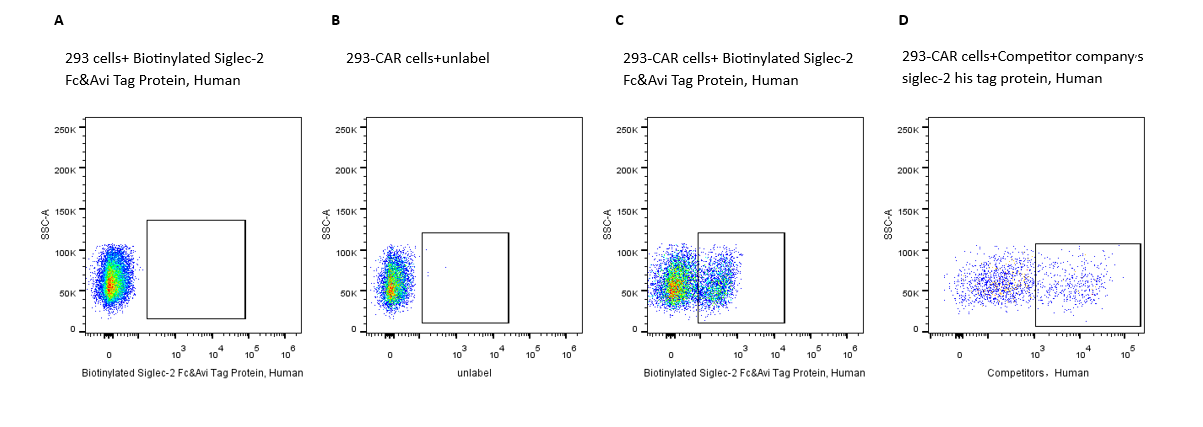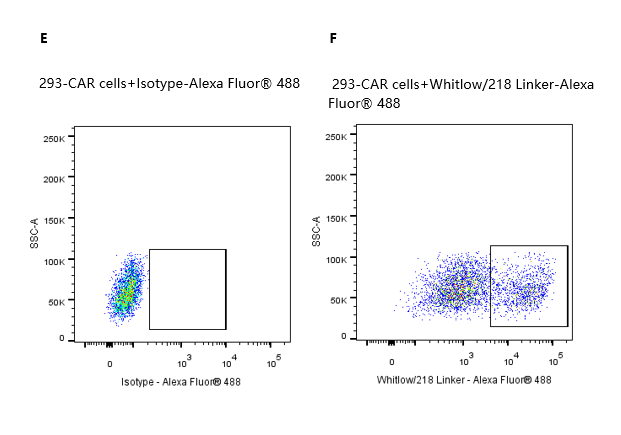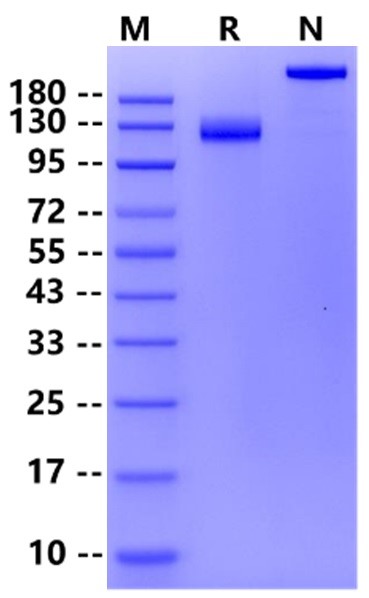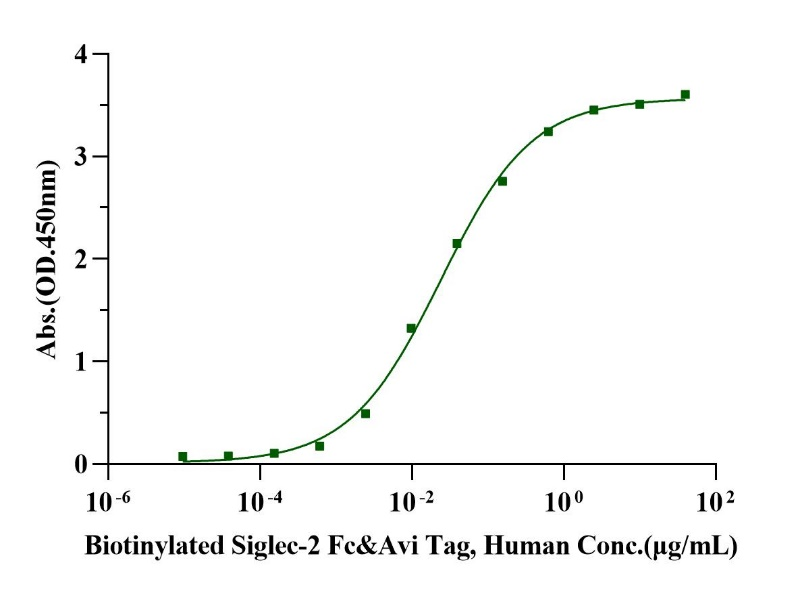Asp20-Arg687, with C-terminal Fc & Avi Tag DSSKWVFEHPETLYAWEGACVWIPCTYRALDGDLESFILFHNPEYNKNTSKFDGTRLYESTKDGKVPSEQKRVQFLGDKNKNCTLSIHPVHLNDSGQLGLRMESKTEKWMERIHLNVSERPFPPHIQLPPEIQESQEVTLTCLLNFSCYGYPIQLQWLLEGVPMRQAAVTSTSLTIKSVFTRSELKFSPQWSHHGKIVTCQLQDADGKFLSNDTVQLNVKHTPKLEIKVTPSDAIVREGDSVTMTCEVSSSNPEYTTVSWLKDGTSLKKQNTFTLNLREVTKDQSGKYCCQVSNDVGPGRSEEVFLQVQYAPEPSTVQILHSPAVEGSQVEFLCMSLANPLPTNYTWYHNGKEMQGRTEEKVHIPKILPWHAGTYSCVAENILGTGQRGPGAELDVQYPPKKVTTVIQNPMPIREGDTVTLSCNYNSSNPSVTRYEWKPHGAWEEPSLGVLKIQNVGWDNTTIACAACNSWCSWASPVALNVQYAPRDVRVRKIKPLSEIHSGNSVSLQCDFSSSHPKEVQFFWEKNGRLLGKESQLNFDSISPEDAGSYSCWVNNSIGQTASKAWTLEVLYAPRRLRVSMSPGDQVMEGKSATLTCESDANPPVSHYTWFDWNNQSLPYHSQKLRLEPVKVQHSGAYWCQGTNSVGKGRSPLSTLTVYYSPETIGRRGGGSGGGSPKSSDKTHTCPPCPAPELLGGPSVFLFPPKPKDTLMISRTPEVTCVVVDVSHEDPEVKFNWYVDGVEVHNAKTKPREEQYNSTYRVVSVLTVLHQDWLNGKEYKCKVSNKALPAPIEKTISKAKGQPREPQVYTLPPSRDELTKNQVSLTCLVKGFYPSDIAVEWESNGQPENNYKTTPPVLDSDGSFFLYSKLTVDKSRWQQGNVFSCSVMHEALHNHYTQKSLSLSPGKGLNDIFEAQKIEWHE
115-125kDa
PBS, pH7.4
Reconstitute at 0.1-1 mg/ml according to the size in ultrapure water after rapid centrifugation.
· 12 months from date of receipt, lyophilized powder stored at -20 to -80℃.
· 3 months, -20 to -80℃ under sterile conditions after reconstitution.
· 1 week, 2 to 8℃ under sterile conditions after reconstitution.
· Please avoid repeated freeze-thaw cycles.
1、Fujimoto M. et al. (2007) B cell signaling and autoimmune diseases: CD19/CD22 loop as a B cell signaling device to regulate the balance of autoimmunity. J Dermatol Sci. 46(1): 1-9.
2、Walker J A. et al. (2008) CD22: an inhibitory enigma. Immunology. 123(3): 314-325.
3、Nitschke L. (2009) CD22 and Siglec-G: B-cell inhibitory receptors with distinct functions. Immunol Rev. 230(1): 128-143.
Human Siglec-2, also known as B cell antigen CD22 or B lymphocyte cell adhesion molecule (BL-CAM), is a B cell restrictive glycoprotein that is expressed in the cytoplasm of progenitor B and pre-B cells and on the surface of mature B cells. CD22 mediates the interaction between B cells and may participate in the localization of B cells in lymphoid tissue. Siglec-2/CD22 binds to sialylated glycoproteins and plays a role in positive regulation by interacting with the Src family tyrosine kinases. It may also act as an inhibitory receptor by recruiting cytoplasmic phosphatase through its SH2 domain, blocking signal transduction through dephosphorylation of signaling molecules.


2e5 of transient transfected anti-Siglec-2 ScFv CAR-293 cells were stained with 0.1ug Biotinylated Siglec-2 Fc&Avi Tag Protein, Human, (Cat. No. UA010426) and unlabel respectively (Fig. C and B), and non-transfected 293 cells were used as a control (Fig. A). PE signal was used to evaluate the binding activity.
2e5 of transient transfected anti-Siglec-2 ScFv CAR-293 cells were stained with competitor respectively (Fig. D). APC signal was used to evaluate the binding activity.
2e5 of transient transfected anti-Siglec-2 ScFv CAR-293 cells were stained with isotype and Whitlow/218 Linker-Alexa Fluor® 488 (Fig. E and F). Alexa Fluor® 488 signal was used to evaluate the binding activity.


Immobilized Anti-Human CD22 Monoclonal Antibody(Pinbio) at 1.0μg/mL (100μL/well) can bind Biotinylated Siglec-2 Fc&Avi Tag Protein, Human (Cat. No. UA010426) with EC50 of 1.92-2.95ng/mL.